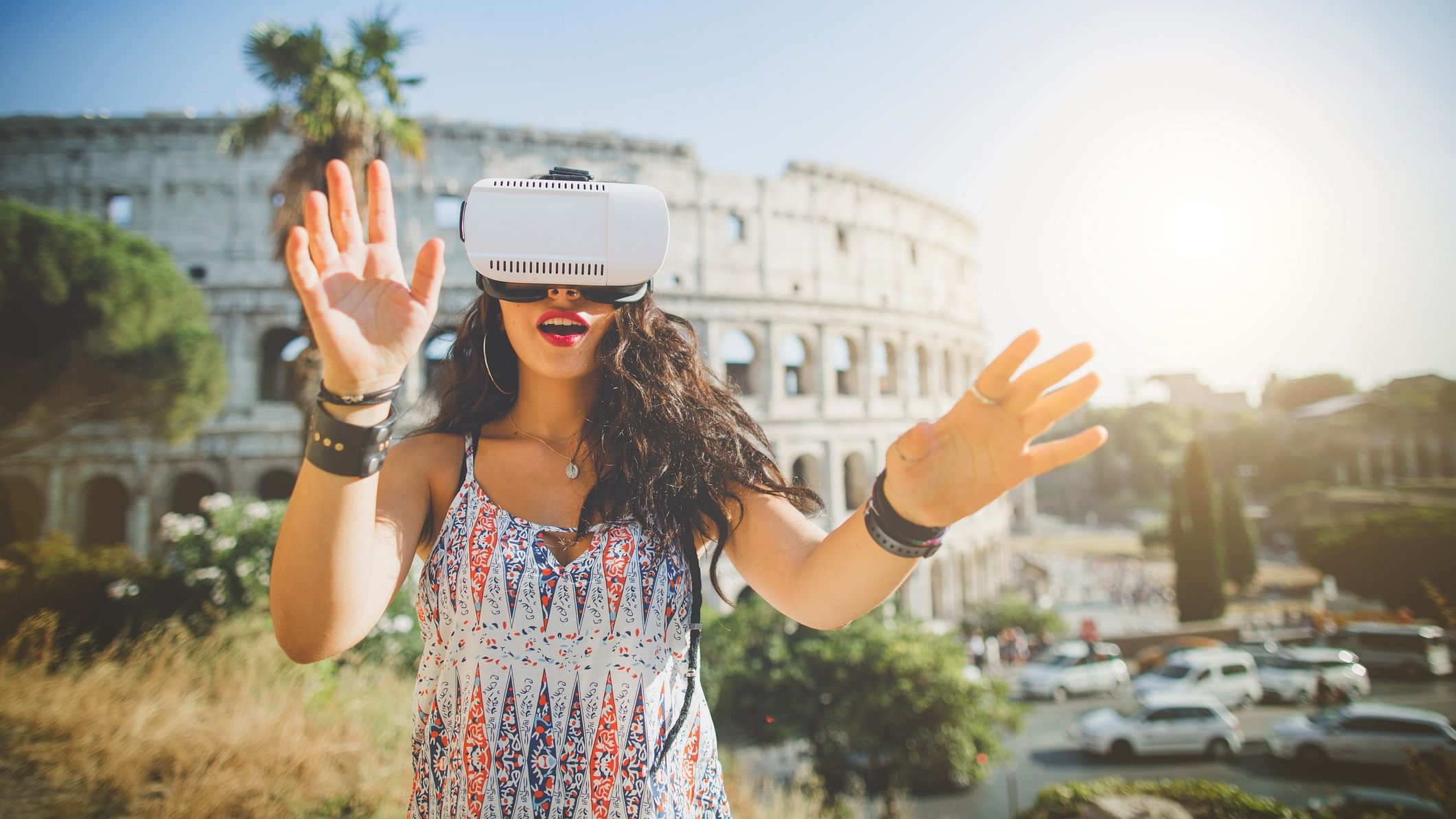
Image for representation.
Credit: iStock Photo
It may seem odd to suggest a 1960s TV sci-fi series can help solve the problem of overcrowded holiday hotspots.
But while the ‘holodeck’ from Star Trek is still some way off, similar technologies are being successfully employed as a way to deal with overtourism.
Overtourism is a phenomenon common in many tourist attractions all over the world and occurs when the tremendous increase in the number of visitors causes a decline in the quality of the local environment.
People are naturally drawn to famous destinations wherever they may be and with ease of travel and better incomes, this number is increasing by leaps and bounds.
The result? Congestion and overcrowding at these sites which stress out local communities and endanger the natural and local resources as well as heritage assets.
Entire neighbourhoods of some European cities have been transformed into tourist zones. Locals are being locked out and face disruptions, a degradation in their quality of life.
National parks and other beauty spots suffer environmental deterioration with trails developed for tourists being damaged and natural habitats of wildlife invaded and trampled.
As a result, many popular tourist destinations are implementing restrictions on entry, higher entrance fees or even shutting down altogether to maintain their integrity and a sustainable future.
Such drastic measures are not always possible given the lure of tourism revenue and may not always be welcomed by the public.
Armchair experience
This is where the internet and new digital technologies can provide creative and viable solutions.
Virtual and augmented reality is among the most promising trends in overcoming overtourism. This technology gives a feel of real-life experience without the need to leave your own home.
A tour of the Louvre Museum in Paris or a walk with 360-degree views along the Great Wall of China can be experienced in an armchair thousands of kilometres away.
Such virtual experiences were first popularised during the Covid-19 pandemic as many tourist sites provided online tours with borders being closed.
This idea of ‘virtual tourism’ could play a role in the reduction of actual visitors to locations hit by overcrowding.
Instead of thousands of people visiting a fragile environment or a historical site, some could opt to watch a video or slideshow which can help satisfy their wanderlust without causing harm to the environment at the cultural site.
The role of big data
Smart tourism management is another innovation aimed at controlling tourist traffic more efficiently through the use of big data analyses and monitoring technologies.
Authorities can monitor the movement of tourists and estimate the periods when the numbers will be high or over capacity. They can then intervene to control numbers.
Sensors and cameras can also be installed in high-traffic tourist destinations which offer real-time data on the number of people present. This information can then be utilised to warn potential visitors through mobile applications or social networks of overcrowding while offering alternative destinations.
This data can also be used by authorities to improve their infrastructure, services, and transport networks. Mapping visitor behaviour patterns can help cities spread the load of visitors while maximising facilities.
The role of AI
Artificial intelligence can also help combat overtourism. AI can bring together all the digital tools mentioned above to help cities cope better with tourists.
This dynamic management can go a long way in enhancing the long-term sustainability of tourism spots.
AI can also advise individual tourists in real time on areas not congested or when nonpeak hours are. Through the personalisation of travel recommendations and real-time conditions, AI can help tourists plan their visits in order not to overload popular attractions.
Social media can be both a cause of overtourism and a tool for addressing the problem. While influencers on Instagram, Facebook, and TikTok popularise certain places the same platforms can be used also to move attention to alternative and unknown places.
By collaborating with influencers, local tourism boards and destination management organisations can market and promote these equally attractive sites that offer similar great experiences.
Digital media can also be used to promote responsible tourism, educating visitors about respecting local cultures, avoiding harming the natural environment, behaving in a proper way, and avoiding littering.
The Internet and the latest digital tools are providing new opportunities and approaches to the sustainable management of tourism. While technology alone cannot solve the issue of overtourism, it can provide the key enablers that, if well deployed, can revolutionise the tourism sector.
These technologies are not here to replace, and indeed they cannot replace actual, physical travel. But they can certainly help ensure that the wonders of the world remain accessible and preserved for generations to come.
(Nansy Kouroupi is an associate researcher and visiting lecturer at Les Roches Global Hospitality Education, Switzerland, and a doctoral researcher at the University of Thessaly, Greece.)
(This article was first published under Creative Commons by 360info.)
Disclaimer: The views expressed above are the author's own. They do not necessarily reflect the views of DH.